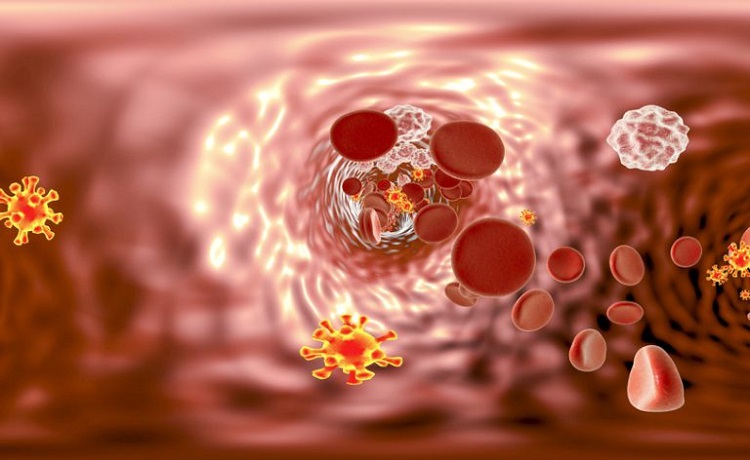The transmission of HIV involves the acquisition of the viral infection from which you will never heal. The late stage of HIV infection is the full-blown disease, or the AIDS (acquired immunodeficiency syndrom), phase in which the manifestation of symptoms has a strong impact on the body.
HIV is a retrovirus, that is a virus that has RNA as genetic material, but to complete the infective cycle, must transform the RNA into DNA, through a process known as reverse transcription.
After, the infection HIV attacks and weakens the immune system, rapidly multiplying in the blood. When the body begins to react to the infection, flu-like symptoms appear. For a longer or shorter period, the antibodies can cope with the infection but, little by little, the immune system is weakened and no longer able to fight the virus. The late stage of infection (AIDS) sees the decline of CD4 lymphocytes that are no longer able to defend the body from certain types of infections and diseases.

AIDS: How is it transmitted?
The HIV is called a sexually transmitted virus. All infected body fluids are potentially infectious, including:
- Semen
- Blood
- Vaginal secretions
- Breast milk
The saliva is contagious especially in the presence of problems in the mouth, which determine for example the blood spill.
The infection can occur either through sexual contact, through unprotected sex, whether by blood, through the exchange of syringes, not sterile medical instruments, blood transfusions, etc.
A newborn can contract HIV from the mother, if it is infected.
HIV: How long is the incubation period?
The HIV infection essentially goes through four main stages:
- Incubation
- Acute infection
- Latency period
- AIDS
The initial period of incubation, totally asymptomatic (i.e. free of symptoms), lasts on average from 2 to 4 weeks from the moment of infection.
The second stage, acute infection, lasts an average of 28 days (but usually less) and is manifested in some cases through flu-like symptoms:
- Temperature
- Diffuse lymphadenopathy (swollen lymph nodes)
- Pharyngitis
- Cutaneous manifestations
- Myalgia (muscle pain)
- Malaise
- Oral ulcers
- Headache
- Enlarged liver / spleen
- Weight loss
- Thrush
- Neurological symptoms
The third phase once again becomes free from symptoms and can last from a few years to more than 15, until comes the phase of AIDS with the development of infections and various cancers (pneumonia, fungal infections …)
It may take 10 years or more before they manifest the symptoms. During this time, they can transmit the virus without even knowing they have it.
HIV: Life expectancy
There are no cures for HIV healing or AIDS. The antiretroviral therapy is the only way to allow to keep under control the virus, removing the probability that destroys the immune system. Children who acquire HIV at birth develop AIDS very early and tend to have more serious complications than adults with the virus do.
The new drugs have made it possible to ensure, to the HIV-positive patients treated, an expectation of a better life, even in the case of delayed diagnosis the average survival is often a few decades or more. With this therapy, those who have contracted the virus can prevent the onset of AIDS and enjoy a life expectancy equal to that of the general population.
The timing of the start of antiretroviral therapy is key to improving life expectancy: before initiating therapy and more likely to ensure an expectation equal to healthy subjects, to the point that, in developed countries, is now defined chronic disease and not deadliest disease.
